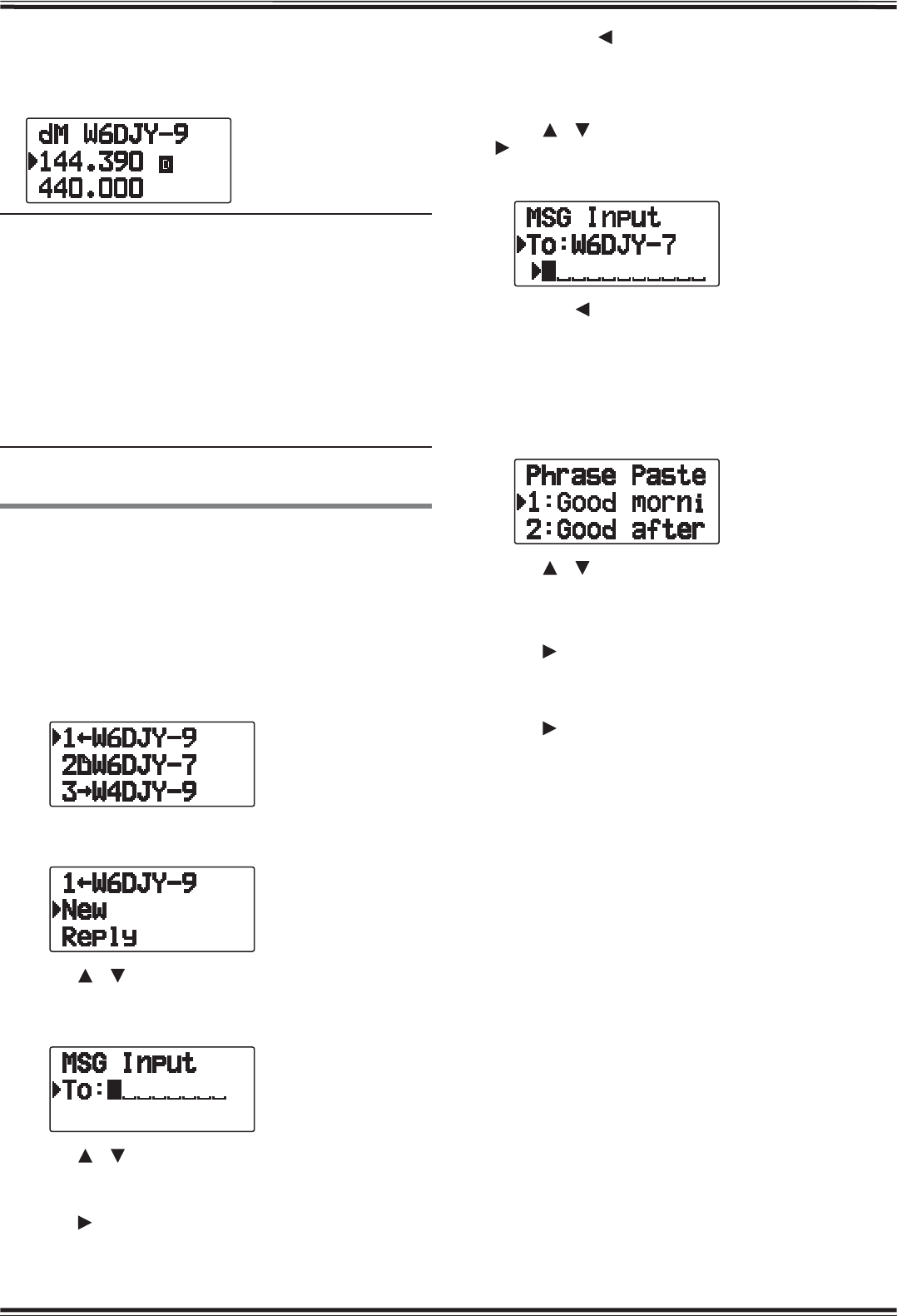
APRS – 7
• When a duplicate message from the same station is
received, the reception interrupt display does not appear
and an error tone sounds. When the frequency at that time
appears on the display, “dM” (duplicate Message) and the
calling station's call sign appears on the display.
Note:
X This transceiver allows you to receive a message also when
the SSID does not match. However, it will not return a reception
acknowledgment.
X The dedicated memory is used for storing both incoming and
outgoing messages. Receiving a new message when the memory
is full causes the oldest message to be deleted. A message
not yet transmitted 5 times may be unexpectedly deleted. If the
oldest message has not been accessed using the List function
when memory is full, a new message does not replace the oldest
message. This transceiver will return a reject command and
display “rM”.
X This transceiver beeps each time it receives any type of APRS
packet. You may access Menu 3N0 (Sound-RX Beep) to change
this setting. The default is “All”.
ENTERING A MESSAGE
To transmit a message, first enter the call sign of the
target station. To transmit a bulletin, enter “BLN#” instead;
where # must be 0 to 9 or A to Z. When the length of your
bulletin exceeds 64 digits, you may transmit more than
one packet to send the entire bulletin. Use # to indicate
the sequence of the bulletin portions. For example, enter
“BLN0” (or “BLNA”) to send the first packet, then “BLN1”
(or “BLNB”) to send the second packet.
1 Press [MSG].
• The message list appears on the display.
2 Press [MENU].
• The message list menu appears on the display.
3 Press [ ]/[ ] or rotate the Tuning control to select
[New] or [Reply].
• The display for entering a call sign appears; the first digit
blinks. (When you press [Reply], not necessarily)
4 Press [ ]/[ ] or rotate the Tuning control to select
the first digit.
• You can enter 0 to 9, A to Z, and –.
5 Press [ OK].
• The cursor moves to the next digit.
•
Press [ESC ]: Causes the cursor to move
backward.
• Press [A/B]: Deletes the digit at which the cursor is
blinking.
6 Press [ ]/[ ] or rotate the Tuning control then press
[ OK] to complete the setting.
• The display for entering a message appears; the first digit
blinks.
Press [ESC ]: Causes the cursor to move backward.
Press [A/B]: Deletes the digit at which the cursor is
blinking.
• To copy a message, enter message compilation mode,
press
[F] to enter function mode, then press [1] (Paste 1),
[2] (Paste 2), [3] (Paste 3), [4] (Paste 4), [5] (Paste 5), [6]
(Paste 6),
[7] (Paste 7), or [8] (Paste 8) key for 1 second
to copy the message that has been set up for each key.
7 Press [ ]/[ ] or rotate the Tuning control to select
the first digit.
• You can enter alphanumeric characters plus special
ASCII characters.
8 Press [ OK].
• The cursor moves to the next digit.
9 Repeat steps 6 and 8 to enter up to 67 digits.
10 Press [ OK] to complete the setting.


















